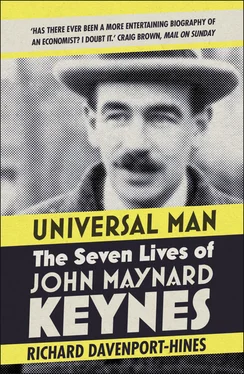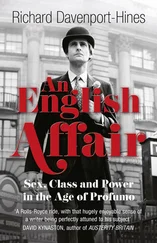A dauntless man in his sixties, a weary titan with heart disease, fighting daily, at interminable, closely argued and exhausting conferences, to save impoverished, war-wrecked Britain from being driven into bankruptcy by the Americans calling in their war loans; knowing that he is sacrificing his life in the effort; and then, in mid-Atlantic, on the liner Queen Elizabeth , while his exhausted colleagues are asleep, padding down the corridor to the radio-room to collect messages reporting how his Anglo-American financial settlement is being decried in England, and retreating to his state-room to prepare the speech of his lifetime, which will send his attackers scuttling into retreat.
Each snapshot shows the same man in similar postures: a disciplined logician with a capacity for glee who persuaded people, seduced them, subverted old ideas, installed new ones; a man whose high brilliance did not give people vertigo, but clarified and lengthened their perspectives. The man was John Maynard Keynes (1883–1946).
Keynes was the chief intellectual influence on English public life in the twentieth century. He was England’s paramount example of the scholar as man of action. He conceived economic theories in the solitude of his study, and in the cut and thrust of discussion. Then he persuaded the politicians and financiers of two continents to implement them. Isaiah Berlin, who worked with him in wartime Washington, thought him the cleverest man he knew – ‘intellectually awe-inspiring’. Lord Beaverbrook, the newspaper magnate and master manipulator of opinion, called Keynes, in 1945, England’s ‘finest living propagandist’. Eric Hobsbawm put him in a list of political ‘movers and shapers of the twentieth century’ together with Lenin, Stalin, Roosevelt, Hitler, Churchill, Gandhi, Mao Tse-tung, Ho Chi Minh, de Gaulle, Mussolini and Franco. Before him, economic man lived by the fossil fragments of dinosaur systems. Phrases like ‘Keynesian economics’ and the ‘Keynesian Revolution’ testify to his influence on both economic theory and government policies. Indeed, ‘Keynesian economics’ was not as decisive to the world as the ‘Keynesian era’: that thirty-five-year period after the Second World War when versions of his economic ideas dominated the economic policies of Western governments, creating a boom that can now be seen as the most sustained period of rapid expansion in history. Keynesianism upheld regulated capitalism. It involved a commitment to full employment at any cost which, in England, dominated the economic policies of both Labour and Conservative governments from Attlee in 1945 to the onset of Thatcher in 1979.3
It is as an economist that Keynes is invoked, admired and deplored. His reputation rests on his writings and interventions in economic policy. Roy Harrod, who published the official biography of him in 1951, Robert Skidelsky, who wrote three masterly volumes at intervals from 1983, Donald Moggridge, who edited his papers in thirty volumes and then published his authoritative Maynard Keynes: An Economist’s Biography in 1992, understandably all made economics paramount. Skidelsky’s volumes amount to 1,758 pages: there are 990 pages in Moggridge. This approach is estimable; but it is not right for every reader. ‘The worst of economics is that it really is a technical and complicated subject,’ Keynes wrote in 1930. ‘One can make approximate statements in a common-sense sort of way which may appear superficially satisfactory. But if someone begins to ask one intelligent and penetrating questions it is only possible to deal with them by means of something much more complicated.’ This short book is notable for its technical omissions and for its selective emphasis in depicting Keynes.4
Leonard Woolf, who was a member of the same gifted esoteric clan in Cambridge and London, summarized Maynard Keynes: ‘a don, a civil servant, a speculator, a businessman, a journalist, a writer, a farmer, a picture-dealer, a statesman, a theatrical manager, a book collector, and half a dozen other things’. Keynes was confident equally in Whitehall, Washington, Cambridge, Covent Garden, the Bank of England and the Arts Council. In each of these domains, and in the dining-clubs and private discussion groups of which he was an inveterate habitué, Keynes conjoined different networks of expertise, influence and ambitions. Woolf did not use the word ‘economist’ to characterize him: nor does the word occur in any chapter title in this book. Keynes was of a type that was more common in the sixteenth, seventeenth and eighteenth centuries than in the twentieth, whose ardent curiosity, knowledge, imagination and activity were directed at almost every aspect of humanity. He pursued multifarious interests, which fashioned the sort of economist that he became. The climate of his life – what Louis MacNeice in his poem ‘Autumn Journal’ called ‘the frost that kills the germs of laissez-faire ’ – is the concern of this book.5
In the England of Keynes’s generation, pleasures were seen as vices unless they had been deferred; instant gratification was immoral; joy-of-life was treated almost as a contraband luxury; and people tried to hide their emotions from indiscriminate gaze behind shutters which were fastened tight. Most accomplished and effective Englishmen of Keynes’s class compartmentalized their lives. It was inherent in their cultural assumptions to categorize and segregate emotions and people according to their worth, to manage their conflicting motives and experiences by keeping them apart, and to be discerning in their evaluation of ideas and institutions. Compartmentalization was implanted by family circumstances, instilled by boyhood training, and found in manhood to be indispensable for forming priorities and making choices. If people were to enjoy clear, orderly, civilized, productive lives, without blurs, smudges, mess, waste and overlap, it was essential for them not to mix their friends, aims, urges and trepidation in an undifferentiated hotchpotch. Maynard Keynes exemplified the truth that compartmentalization is a mark of intelligence as well as requisite to successful intentions. Accordingly the structure of this book is not a chronological narrative. It treats him in turn as an exemplary figure, as a youthful prodigy, as a powerful government official, as an influential public man, as a private sensualist, as a devotee of the arts and as an international statesman. By showing the disconnections as well as the continuities, the distances as well as the intimacies, it tries to remind readers that Keynes believed that one’s different traits and activities should be disposed with care like the freight separated and stowed in a ship’s bulkheads to stop capsize.
Keynes was a great persuader. ‘The misery of life was having to persuade people,’ he told the Cambridge don Arthur Benson three months before the outbreak of the First World War (adding that the trouble was that few people halted to think before talking). ‘Words ought to be a little wild,’ he said in Dublin in 1933, ‘for they are assaults of thoughts upon the unthinking.’ Keynes spent his life trying to prompt, convince and stimulate people into right thinking. He drew on his circumstances and surroundings as he resisted slogans, exposed lies, knocked aside people’s crutch-words, insisted upon what was actual, built a bridgehead into reality. No account of his persuasive powers can omit a description of his voice. Austin Robinson, who worked with him in Cambridge seminars, official meetings and international diplomatic negotiations, stressed the sound of Keynes. ‘That beautiful, musical, resonant voice, allied to an unparalleled power of lucid exposition and to a range of vocabulary and a joy in words comparable only to that of Winston Churchill in his generation, made him a pleasure to listen to, whether you agreed or disagreed, whether you knew all about what he was talking about, or nothing about it. He never bored. He never exhausted. He was never trite.’6
Читать дальше












